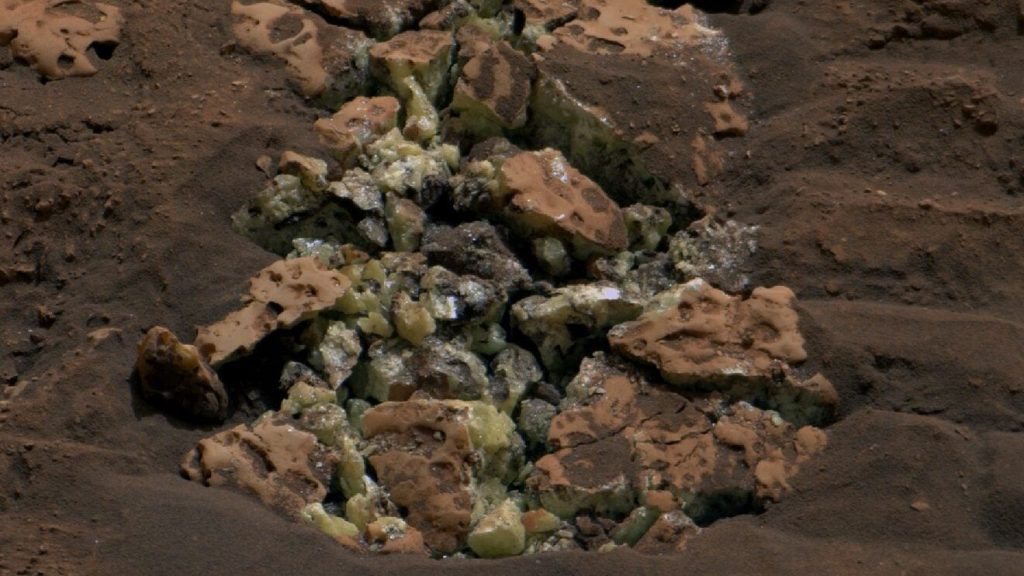For nearly a decade, NASA’s four-wheeled robot has been scaling the base of Mount Sharp, a tall mountain that towers over an ancient crater on Mars, unraveling its layers. In its latest discovery, the Mars rover stumbled upon a rocky region made of pure sulfur, a chemical element that could hold valuable clues about the Red Planet’s watery past.
The Curiosity rover recently drove over a rock and accidentally broke it, revealing shiny yellow crystals that scientists later determined to be elemental sulfur, NASA said. SaidSulfur-based minerals (mixtures of sulfur with other substances) have been found on Mars before, but this is the first time rocks made of pure sulfur have been found. Mars may have a lot of these minerals, but scientists aren’t sure how they formed.
“Finding a rock block made of pure sulfur is like finding an oasis in the desert,” Ashwin Vasavada, Curiosity project scientist at NASA’s Jet Propulsion Laboratory, said in a statement. “It’s not supposed to be there, so we have to explain it.”
Pure sulfur is tasteless and odorless and occurs naturally in volcanic areas through the oxidation of hydrogen sulfide. However, this particular area explored by Curiosity shows no signs of past volcanic activity. Pure sulfur is also shape Through the oxidation of reduced sulfur compounds by microbial activity. If so, the discovery of sulfur on Mars could aid in the search for ancient microbial life on the Red Planet.

The Curiosity rover is exploring Gediz Canyon, a winding channel likely carved by an ancient river that has left a trail of rocks and sediment spanning two miles. By exploring this area, the rover is gathering clues about parts of Mars’ ancient landscape that may have provided the nutrients necessary for microbial life to form on Mars.
Curiosity wasn’t able to collect any sulfur rock samples because they were too small and fragile, but it did find a large boulder nearby that the team dubbed “Mammoth Lakes.” The rover used a drill on the end of its 7-foot (2-meter) robotic arm to drill into the rock and extract samples that could be analyzed by instruments mounted on the rover’s belly.
“Discovering strange and unexpected things is what makes planetary exploration so exciting,” Vasavada said.


